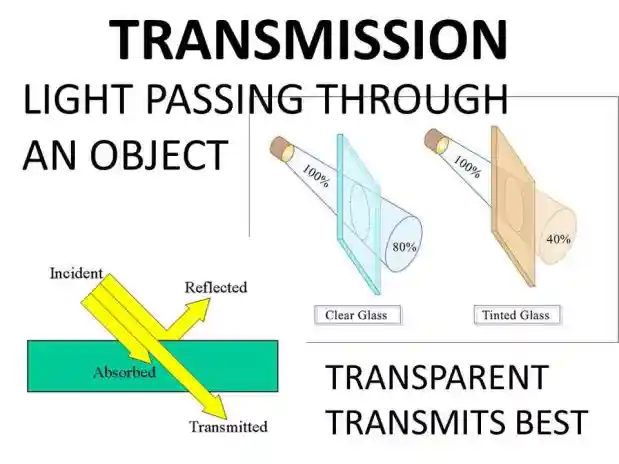
INTRO VIDEOS: https://youtu.be/DOsro2kGjGc
Reflection occurs when light bounces back as it hits a reflecting surface, such as a mirror. This phenomenon can be described using light rays.
Reflection is the change in direction of a wavefront at an interface between two different media so that the wavefront returns into the medium from which it originated. Common examples include the reflection of light, sound and waterwaves. The law of reflection says that for specular reflection the angle at which the wave is incident on the surface equals the angle at which it is reflected. Mirrors exhibit specular reflection.
The ray of light that hits the reflecting surface is called an incident ray. After hitting the surface, it bounces off as a reflected ray. The incident ray and the reflected ray form angles with the normal line, which is a line perpendicular to the reflecting surface. These angles are called angle of incidence and angle of reflection, respectively.
The relationship between the angle of incidence and the angle of reflection is illustrated in the law of reflection. This law states that the angle of incidence, the angle of reflection, and the normal line are found on the same plane; and the angle of incidence is equal to the angle of reflection.


Types of Reflection
There are two types of reflection: regular reflection and irregular reflection.
- Regular reflection, also known as specular reflection occurs when light strikes a smooth surface like a mirror, and light rays are reflected in one direction.
- Irregular reflection or diffuse reflection occurs when light strikes a rough surface, and light rays are reflected in random directions.

- Refraction is the bending of light due to the change in its speed when it obliquely passes two different media. When light travels from a medium with a low refractive index to a medium with a higher refractive index, it slows down and refracts closer to the normal line. On the other hand, when light travels from a medium with a high refractive index to a medium with a lower refractive index, it speeds up and refracts away from the normal line.The light ray that is entering a different medium is called the incident ray while the bent ray is called the refracted ray.


Refractive index describes how light propagates through a medium. A higher refractive index means the light propagates slower, and its direction changes more upon entering a medium. A lower refractive index means the light travels faster, and its direction changes less upon entering a medium.

Transmission is the passing of light through a material without being absorbed. For instance, an incoming light will just pass through a glass window as transmitted light.
Visible light is the reason we are able to see anything at all. Light moves as a wave, bouncing off objects so we can see them. Without it, we’d be in complete darkness. But, in physics, light can refer to any kind of electromagnetic wave: radio waves, microwaves, infrared, visible light, ultraviolet, X-rays, or gamma rays.
The extent of the transmission of light depends on the type of the material the light strikes. Transparent and translucent materials transmit light, but opaque materials do not. If light is not transmitted, it may have been reflected or absorbed.

Absorption of light occurs when light strikes a material, and the energy that it carries is absorbed by the atoms of the material and is converted into thermal energy.
White light is composed of different components of a spectrum: red, orange, yellow, green, blue, indigo, and violet (ROYGBIV). When an object reflects all the components of light, it appears white. However, when an object absorbs all the components of light, it appears black.
Selective absorption describes the tendency of an object to absorb specific frequencies of light. An object that appears with a particular color means that the object absorbs most of the frequencies and reflects only the color of the object. For instance, the leaf absorbs all the frequencies of light except for green. The green color is reflected and perceived by the observer’s eye.
REFERENCES:
https://en.wikipedia.org/wiki/Reflection_(physics)
http://study.com/academy/lesson/transmission-of-light-definition-lesson-quiz.html
